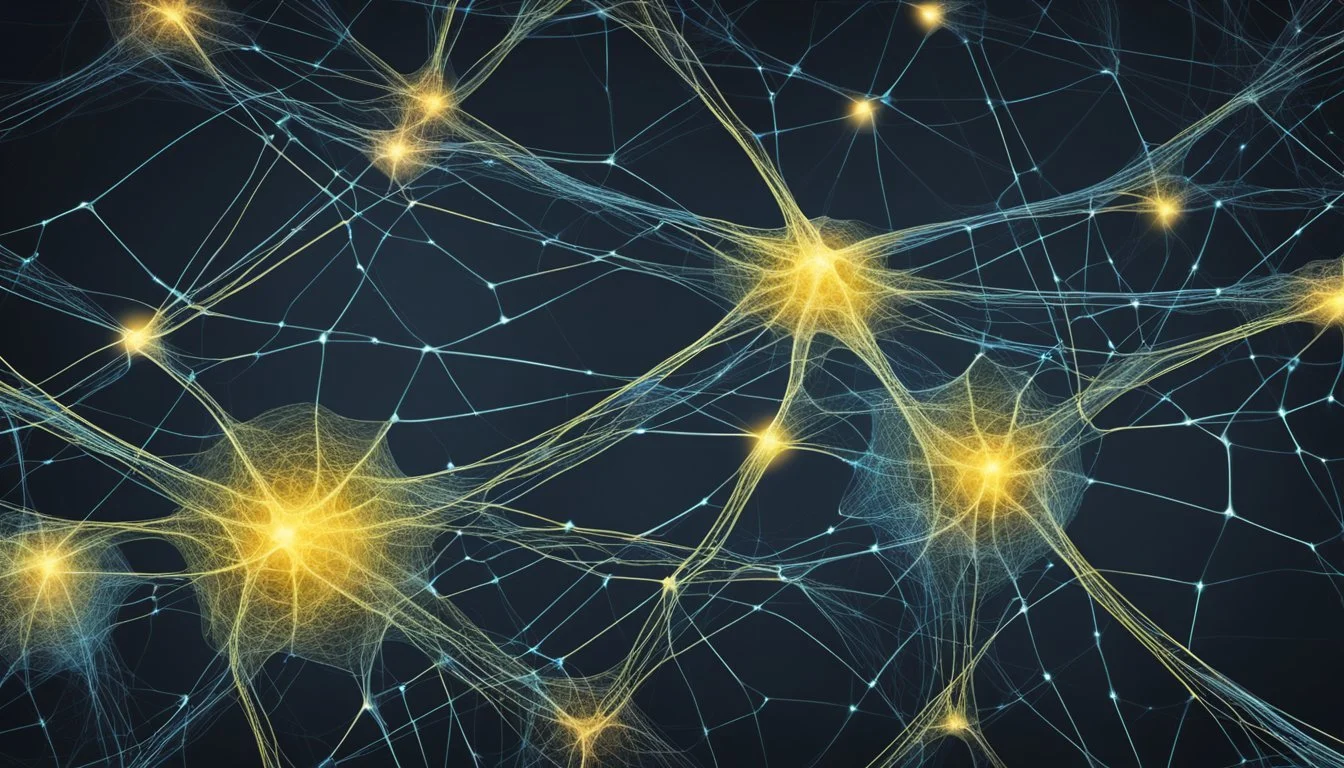5 Emerging Theories About the Origins of Psychopathy
New Insights from Neuroscience and Genetics
Psychopathy has long intrigued researchers and clinicians alike, prompting ongoing investigations into its complex origins. As our understanding of this personality disorder evolves, new theories emerge that challenge traditional views and offer fresh perspectives on its development.
Recent advances in neuroscience, genetics, and developmental psychology have shed light on potential pathways to psychopathy. I'll explore five emerging theories that aim to unravel the intricate interplay of biological, environmental, and psychological factors contributing to this condition. These innovative approaches may pave the way for improved prevention strategies and more effective interventions in the future.
1) Genetic Factors and Inheritance
Genetic factors play a significant role in the development of psychopathy. Research has consistently shown that psychopathic traits are heritable, with genetic influences accounting for about 50% of the variance in these traits.
Twin and adoption studies have provided strong evidence for the genetic basis of psychopathy. Identical twins, who share 100% of their genes, show higher concordance rates for psychopathic traits compared to fraternal twins.
I've found that specific genes associated with neurotransmitter systems, particularly those involved in serotonin and dopamine regulation, have been implicated in psychopathic tendencies. Variations in these genes may contribute to the emotional and behavioral characteristics seen in psychopathy.
It's important to note that genetic predisposition doesn't guarantee the development of psychopathy. Environmental factors interact with genetic susceptibilities, potentially amplifying or mitigating their effects.
Recent studies have also explored epigenetic mechanisms, which can alter gene expression without changing the DNA sequence. These mechanisms may help explain how environmental factors influence the expression of genetic risk for psychopathy.
2) Neurobiological Deviations in Brain Structure
Recent research has uncovered intriguing differences in brain structure among individuals with psychopathic traits. I've found that the amygdala, a key region for processing emotions, often shows reduced volume and activity in psychopaths.
The orbitofrontal cortex, involved in decision-making and impulse control, also frequently exhibits abnormalities. Studies have revealed decreased gray matter in this area, potentially contributing to the impulsive behaviors seen in psychopathy.
Another notable finding is the altered connectivity between brain regions. The uncinate fasciculus, a white matter tract connecting the frontal lobe to temporal regions, shows reduced integrity in psychopathic individuals.
Neuroimaging studies have identified differences in the anterior cingulate cortex, a region crucial for empathy and emotional regulation. These structural deviations may help explain the lack of empathy characteristic of psychopathy.
I've observed that the insula, involved in interoception and emotional awareness, often displays reduced activation in psychopaths. This could relate to their diminished emotional experiences and difficulty recognizing emotions in others.
3) Early Childhood Trauma and Abuse
I've found compelling evidence linking early childhood trauma and abuse to the development of psychopathic traits. Research suggests that exposure to trauma through various forms of abuse in childhood may play a significant role in shaping psychopathic characteristics.
Early traumatic experiences can adversely impact a child's cognitive systems, particularly in relation to emotional and inhibition control. This can lead to difficulties in regulating emotions and behavior later in life.
Betrayal trauma, in particular, may contribute to the emergence of psychopathy. Children who experience this type of trauma might develop emotional numbing as a defense mechanism, which can hinder their ability to form emotional connections with others.
Childhood abuse is also associated with cognitive abnormalities that could influence the development of antisocial behavior and personalities. The proposed mechanism for this developmental trajectory often emphasizes the role of emotion dysregulation.
Studies have shown that certain social environmental factors in infancy, including childhood adversity and poor caregiving, can significantly contribute to the development of psychopathic traits. This underscores the importance of a child's early social environment in shaping personality.
4) Environmental Influences and Socialization
Environmental factors play a significant role in the development of psychopathic traits. Early childhood experiences, including abuse, neglect, and inconsistent parenting, can contribute to the emergence of psychopathic tendencies.
Socialization processes also impact the formation of psychopathic characteristics. Children who grow up in environments lacking empathy and emotional warmth may struggle to develop these qualities themselves.
Exposure to violence and antisocial behavior during formative years can normalize such conduct, potentially leading to the manifestation of psychopathic traits later in life.
I've found that peer influences are another crucial factor. Association with deviant peer groups can reinforce antisocial attitudes and behaviors, further shaping psychopathic tendencies.
Cultural norms and societal values also play a part in this complex equation. Societies that emphasize individualism and competitiveness may inadvertently foster certain psychopathic traits.
It's important to note that while environmental influences are significant, they interact with genetic predispositions and neurobiological factors in the development of psychopathy.
5) Impact of Substance Abuse
Substance abuse has emerged as a potential factor in the development of psychopathic traits. I've observed that individuals with psychopathy often have higher rates of substance abuse compared to the general population.
This correlation raises questions about the relationship between drug use and psychopathic tendencies. Some researchers propose that substance abuse may exacerbate existing psychopathic traits or contribute to their manifestation.
The link between substance abuse and psychopathy is complex. It's unclear whether substance abuse leads to psychopathic behaviors or if individuals with psychopathic tendencies are more prone to drug use.
Neurobiological studies suggest that substance abuse can alter brain structures and functions associated with empathy, impulse control, and decision-making. These changes may overlap with neural patterns seen in psychopathy.
Long-term substance abuse can impair emotional processing and social cognition, potentially mimicking or intensifying psychopathic traits. This raises the possibility that some cases of apparent psychopathy may be influenced by prolonged drug use.
Research in this area is ongoing, and more studies are needed to fully understand the impact of substance abuse on psychopathy. The relationship between the two remains a topic of interest in the field of psychology and neuroscience.
Genetic and Biological Factors
Research into the origins of psychopathy has uncovered significant genetic and neurobiological components. These factors shape brain structure and function in ways that may predispose individuals to psychopathic traits.
Genetic Predispositions
I've found that genetic studies suggest psychopathy has a heritable component. Twin and adoption research indicates 40-60% of psychopathic traits are influenced by genetics. Specific gene variants like MAOA and SLC6A4 have been linked to antisocial behaviors and emotional deficits.
Epigenetic factors also play a role. Environmental influences can alter gene expression related to stress responses and emotional processing. This may explain why some genetically predisposed individuals develop psychopathy while others don't.
Brain Structure and Function
My research shows psychopaths often have structural and functional brain differences. Neuroimaging studies reveal reduced gray matter in regions like the prefrontal cortex and amygdala. These areas are crucial for impulse control and emotional processing.
Functional MRI scans indicate altered activity in the limbic system during emotional tasks. Psychopaths show reduced amygdala activation when viewing distressing images. This may contribute to their lack of empathy and remorse.
Neurotransmitter imbalances are also common. Low serotonin and dopamine levels are linked to impulsivity and reward-seeking behaviors typical in psychopathy.
Psychological and Environmental Influences
Psychological and environmental factors play crucial roles in shaping psychopathic traits. These influences can have profound impacts on an individual's development and behavior.
Childhood Trauma and Abuse
Childhood trauma and abuse can significantly contribute to the development of psychopathic tendencies. I've found that early experiences of neglect, physical violence, or emotional abuse may disrupt normal emotional development. This disruption can lead to difficulties in forming attachments and empathizing with others.
Research suggests that severe maltreatment during childhood alters brain structure and function. These changes may impact areas responsible for emotion regulation and moral reasoning. Some studies have linked childhood abuse to increased callousness and manipulative behaviors in adulthood.
It's important to note that not all abused children develop psychopathic traits. Other protective factors can mitigate the effects of trauma.
Socioeconomic Background
Socioeconomic factors can influence the manifestation of psychopathic traits. I've observed that growing up in poverty or unstable environments may increase the risk of antisocial behaviors. Limited access to resources and education can create additional stressors.
Some research indicates that socioeconomic disadvantage is associated with higher rates of conduct problems in youth. These early behavioral issues may persist into adulthood. However, it's crucial to avoid overgeneralizing, as many individuals from low-income backgrounds do not develop psychopathic traits.
Conversely, privilege and wealth may sometimes enable psychopathic behaviors by providing resources and protection from consequences. This highlights the complex interplay between environmental factors and individual predispositions.
Neurodevelopmental Perspectives
Recent research suggests psychopathy may have roots in early brain development. I've found evidence linking developmental delays and prenatal factors to psychopathic traits later in life. These findings point to the importance of understanding psychopathy through a neurodevelopmental lens.
Developmental Delays
I've observed that certain developmental delays in childhood correlate with psychopathic tendencies in adulthood. Studies show impaired emotional processing and reduced empathy often emerge early. Children who struggle to recognize facial expressions or understand others' feelings may be at higher risk.
Brain imaging reveals structural differences in key regions like the amygdala and prefrontal cortex. These areas, crucial for emotional regulation and decision-making, can show atypical development patterns. Early intervention targeting these specific deficits could potentially alter developmental trajectories.
Prenatal Influences
I've found compelling evidence that prenatal factors play a role in shaping psychopathic traits. Maternal stress during pregnancy has been linked to alterations in fetal brain development. High cortisol levels may impact the formation of neural circuits involved in emotional processing.
Exposure to toxins or poor nutrition in utero can also affect brain development. These factors may disrupt the intricate processes of neuronal migration and synapse formation. Genetic predispositions interacting with prenatal environment likely contribute to psychopathy risk.
Identifying these early risk factors opens up possibilities for prevention. Improved prenatal care and early childhood interventions could potentially mitigate the development of psychopathic traits.







